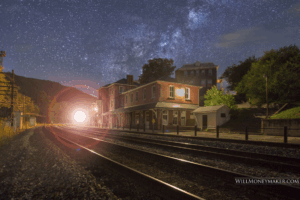Photography is all about exploration. At least, that’s what everyone tells you. There is this constant drive, this constant pressure, to always be seeking something new, something unusual. To seek something other than what we have.
Nowhere is this truer than in the creative process or the ideation portion of photography. If you have an idea and you just can’t make it work, then the common advice is to move on to the next idea. But, eventually, our wells of ideas run dry. The geographical location that we’re able to readily explore starts to constrict, not in terms of landmass but in terms of paths we’ve already traveled. The longer you are a photographer, the harder it becomes to come up with new ideas or to find new things to photograph.
I’d imagine that most of us, as we look through our journals of hastily scribbled thoughts and ideas, will find as many discarded ideas as ideas we’ve pursued. Maybe we have even more discarded ideas than ideas that were brought to fruition. These are thoughts we’ve had, then we wrote them down, but then when we were looking through those thoughts for inspiration, we scrapped those ideas — never even bothered to take a photograph.
The same is likely true of your photographic archives, especially if you’re not much of a note taker. You’ll look through terabytes upon terabytes of information, each series of images its own unique idea but for whatever reason, those ideas were never pursued further.
The pressure is on us to always create new, to not waste time on ideas that don’t work. In fact, I’ve suggested before that spending too much time on an idea can lead to a form of procrastination — at a certain point, we need to finish the project and stop worrying about making it exactly perfect. Then again, as I mentioned earlier, sometimes we simply run out of ideas for new things. So, perhaps there is merit in taking a look at those old notes and those old archives. Revisit that graveyard of ideas and see what you can do with it.
And why would you do such a thing? I think there are many arguments in favor of revisiting previously scrapped ideas. For one thing, there is always the change of heart to consider. This is why I’ve recommended in the past to look through old ideas for new inspiration. Perhaps you had the right idea, only, you had that idea at the wrong time. For whatever reason, the idea didn’t click with you.
This isn’t an especially uncommon phenomenon among creative types. Look at all of the writers out there with a half-finished novel that has been sitting on a hard drive for years or the painter who has a closet full of partly started canvasses. As we age, our perspectives are subject to change. It’s worth it to take all of these new aspects of yourself and go back through all those old ideas. You may find, as you consider them once more, that at least one or two of these ideas are, in fact, worthy of pursuing. You’ll never know until you’ve gone back and looked again!
But the main reason I say that perusing your old ideas might be fruitful is that the ideas you have, those that you’ve not pursued, those ideas represent a challenge. When you take a deeper look into all of these shelved projects, you’ll start to see a common theme. Many of these projects were never started or they were half started — projects in which you made careful notes or took the photographs but never processed them. Why didn’t you pursue these ideas further? Maybe it was because you couldn’t figure out the composition that made the photograph click. Maybe you didn’t yet know the Photoshop techniques needed to process the images. Perhaps you didn’t have the gear you needed to create the image you saw in your mind.
To put it simply, the reason that so many of our imaginings never become a finished photograph is simple: Because it was too hard. Something got in your way. Maybe you weren’t in the right frame of mind to fully envision a half-thought project. Perhaps you struggled with finding the subject material. But with all of this, we have to remember that photography is subjective, as is all art. No idea is a bad idea. We just have a tendency to think that some ideas are bad simply because something stands between us and making that idea fit the standards we’ve set for ourselves.
So, perhaps it is time that we start looking at our abandoned ideas differently. Instead of writing off an idea as a bad one, explore it fully to learn how you can make it good. It’s a creative challenge, similar to embarking on a photo-a-day project, one in which you are challenging your creative mind to work with what you have rather than seeking something new.
If the limitation is something else — subject material, post-processing techniques that you are unfamiliar with, gear limitations — then this represents a different kind of roadblock, one that, with enough determination, we can push through. Photography is, after all, a learning process. If we only stick to the things that are easy, we aren’t pushing ourselves to learn to the fullest extent possible. At a certain point, it becomes next to impossible to keep on learning if we’re not learning how to push past these obstacles.
To me, it makes sense that if we accept this challenge of hammering these so-called failed ideas into things that we love, we are quite likely to surprise ourselves along the way. More than that, we’ll learn how to work around limitations and how to work past those times when the creative new ideas just aren’t flowing.
Now go and enjoy the beauty of God’s creation through your lens.




